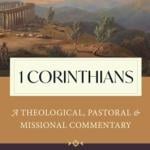2 Kings 16:7: Ahaz sent messengers to Tiglath-pileser king of Assyria, saying, I am your servant and your son. As we’ve seen in the sermon this morning, the changes Ahaz makes to the temple are intended to ingratiate himself to Tiglath-pileser and reflect Ahaz’s chastened sense of his own position in the world. Yahweh said the Davidic kings were sons of Yahweh; but Ahaz declares himself a son of Tiglath-pileser. Yahweh says that the Davidic kings are enthroned next to... Read more
















